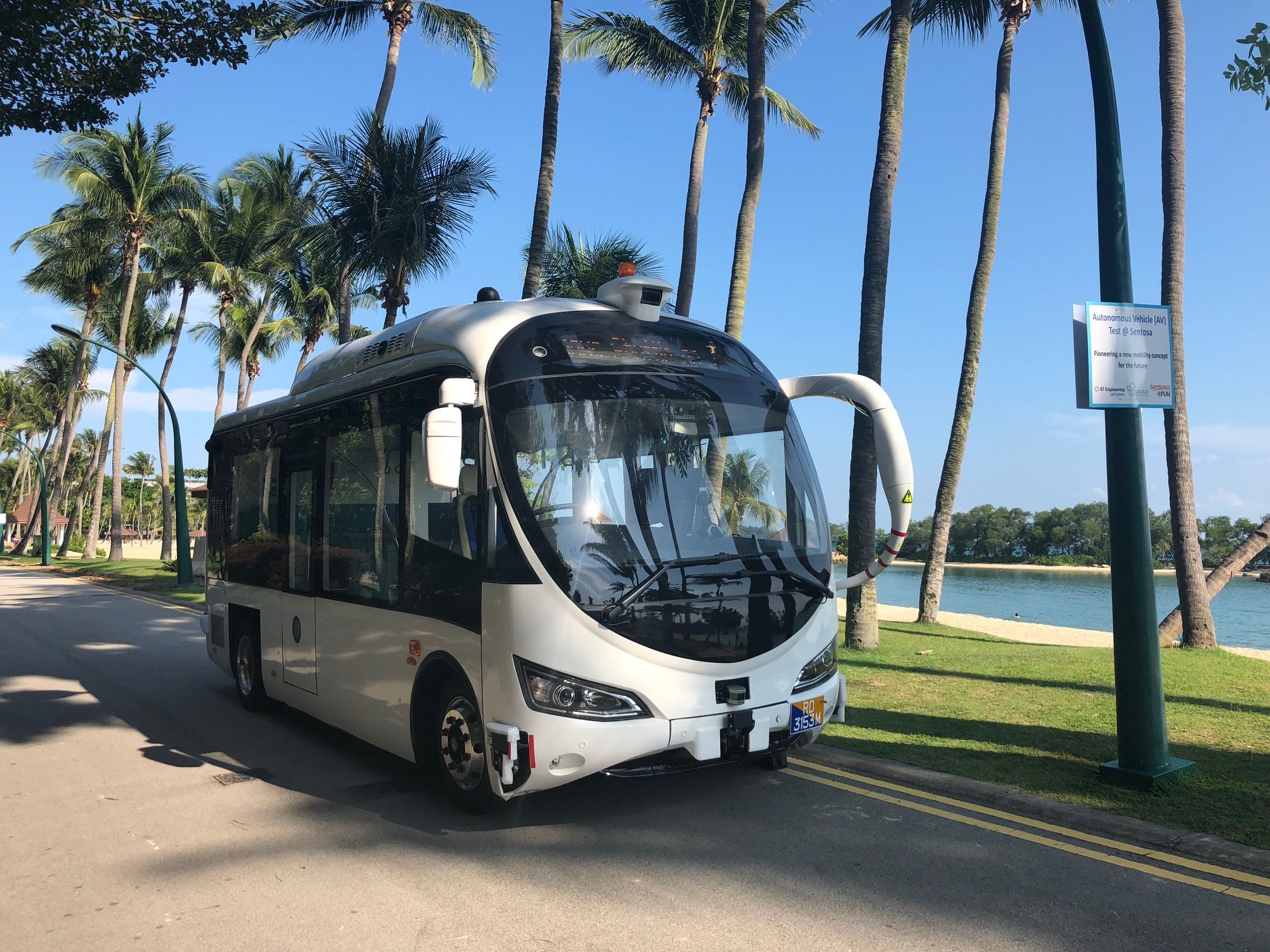For a brief moment, Southeast Asia’s choking urban areas seem to get some relief. The pandemic is miraculously solving pressing traffic congestion and emission problems, even if it might be just for a short time. Local administrations, together with global tech companies, are meanwhile looking for permanent solutions that will turn them into “smart cities,” which has become a buzzword for this type of effort.
Singapore-based ST Engineering is one of the deep-tech conglomerates aiming to improve quality of life—and they started with it at home. During a 3-month-trial last year, the firm with interests in aerospace, shipbuilding, defense, and electronics, was running a public transport service with 7-meter-long “fully-fledged” autonomous buses on the quiet island of Sentosa, connecting several beaches and the golf club.
They managed not to hurt any of the crossing peacocks—something that media reports worried about previously. “We asked to participate in further programs in major residential housing estates,” chief marketing officer Chew Men Leong told KrASIA in an interview. Reflecting on the initial success, he expects more testing to come soon.
Autonomous vehicles and robots are just one kind of applications the company is studying in a real-life environment. Many cities already operate complex intelligent transportation systems designed by ST Engineering. Sensors on street and traffic lights gather the information that is processed on central platforms. “We can actually help cities to transform their street lights infrastructure into one that is networked, and that can be used as a hanger for a whole range of other IoT devices,” said Chew.
At the Singapore x Asia Innovation Partnership Forum, organized by KrASIA and Singapore’s Economic Development Board, Chew named autonomous vehicles, big data (look at all these sensors!), and 5G (which connects everything) as the major trends that will change the way we live. What will be most important now, according to him, is to actually make sense of all that collected data.
Chew says that ST Engineering provides an end-to-end system for a city to monitor traffic, manage it, and get the ability to predict where congestions form, especially when there’s a disruption. The city will have the means to actually resolve it, and take control of the overall traffic flow, as well as the communication with the commuters.
In Singapore, the company designed the current ERP or electronic road pricing system, which was first implemented in 1998 and globally unrivalled at the time. Earlier this month, Singapore’s transport minister Ong Ye Kung announced that from 2023, a new satellite-based system will replace the current camera-based model and the gantries that decorate Singapore’s central business district. “I think it’s the first in the world, where you have a country-based system that imposes congestion charges,” Chew commented.
ST Engineering improved its technology and took it overseas, to China particularly, but also to the Middle East. “As we speak we are implementing the metropolitan command and control center for traffic management in Dubai,” he added.
Security plays an important part, not just in city centers. Security systems are in demand for critical infrastructure, in Asian townships and estates, Chew explains. “We integrate the different sub-systems and provide the platform for a complete overview in terms of access, and potential intrusion.” He refers to video analytics, touchless access, and the efficient management of security information, among other parts.
This may involve drones as well. “We can deploy multiple drones simultaneously for a whole range of functions from security, surveillance, to transportation and inspection of buildings,” said Chew. “We don’t build drones. What we do, is to put the system needed to manage them.” Something else that comes up, especially when working with security agencies, is the potential use of more offensive counter drones in order to defend critical infrastructure. “We are building up capabilities here,” he said.
At the event, Chew further mentioned that ST Engineering is working with several startups, small, and medium enterprises. “We have a war chest of USD 150 million for venture investments,” he elaborated. The company is looking into startups with the appropriate technology that can fit their offerings. ST Engineering already made three investments, in the area of cybersecurity for autonomous vehicles and data analytics.
